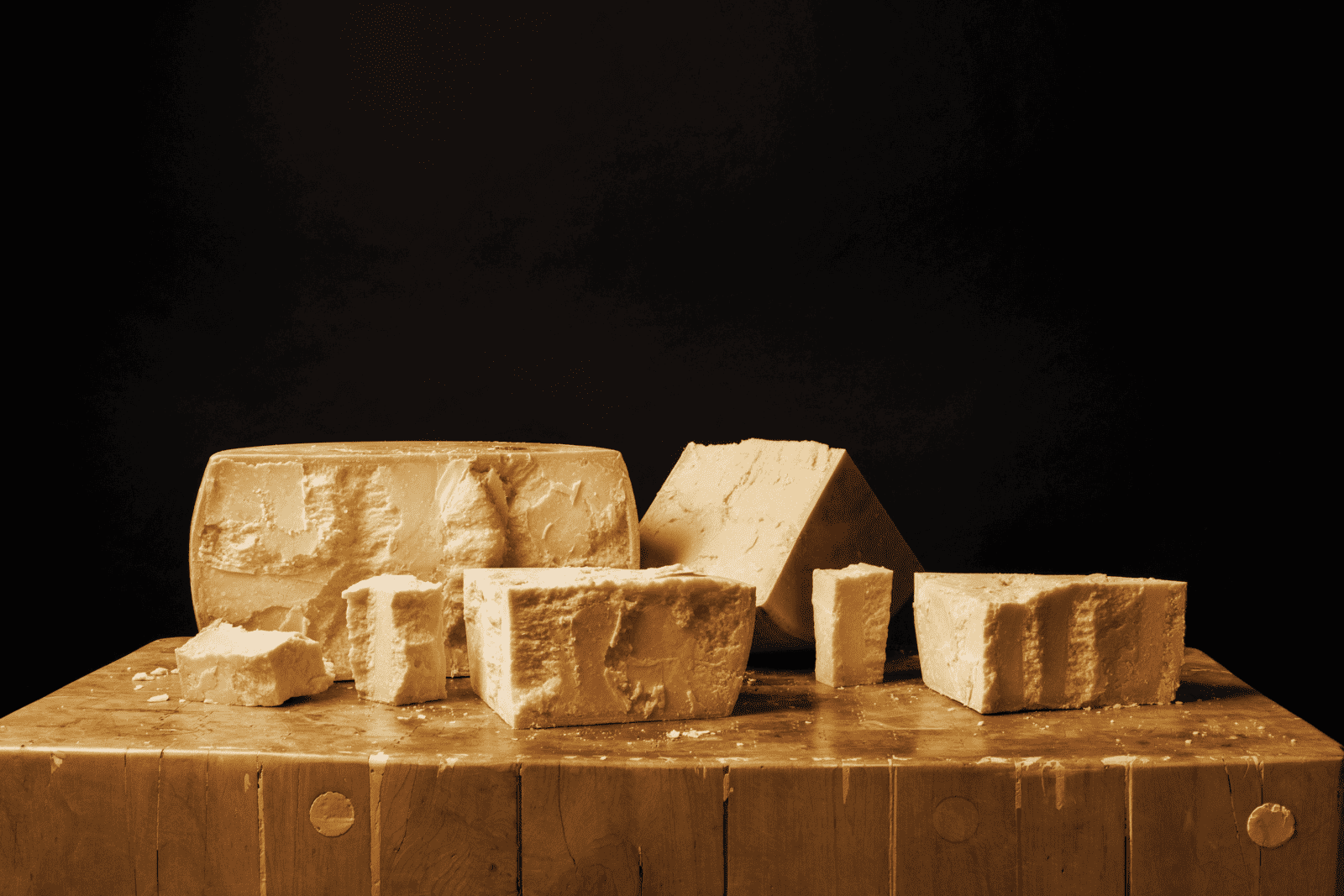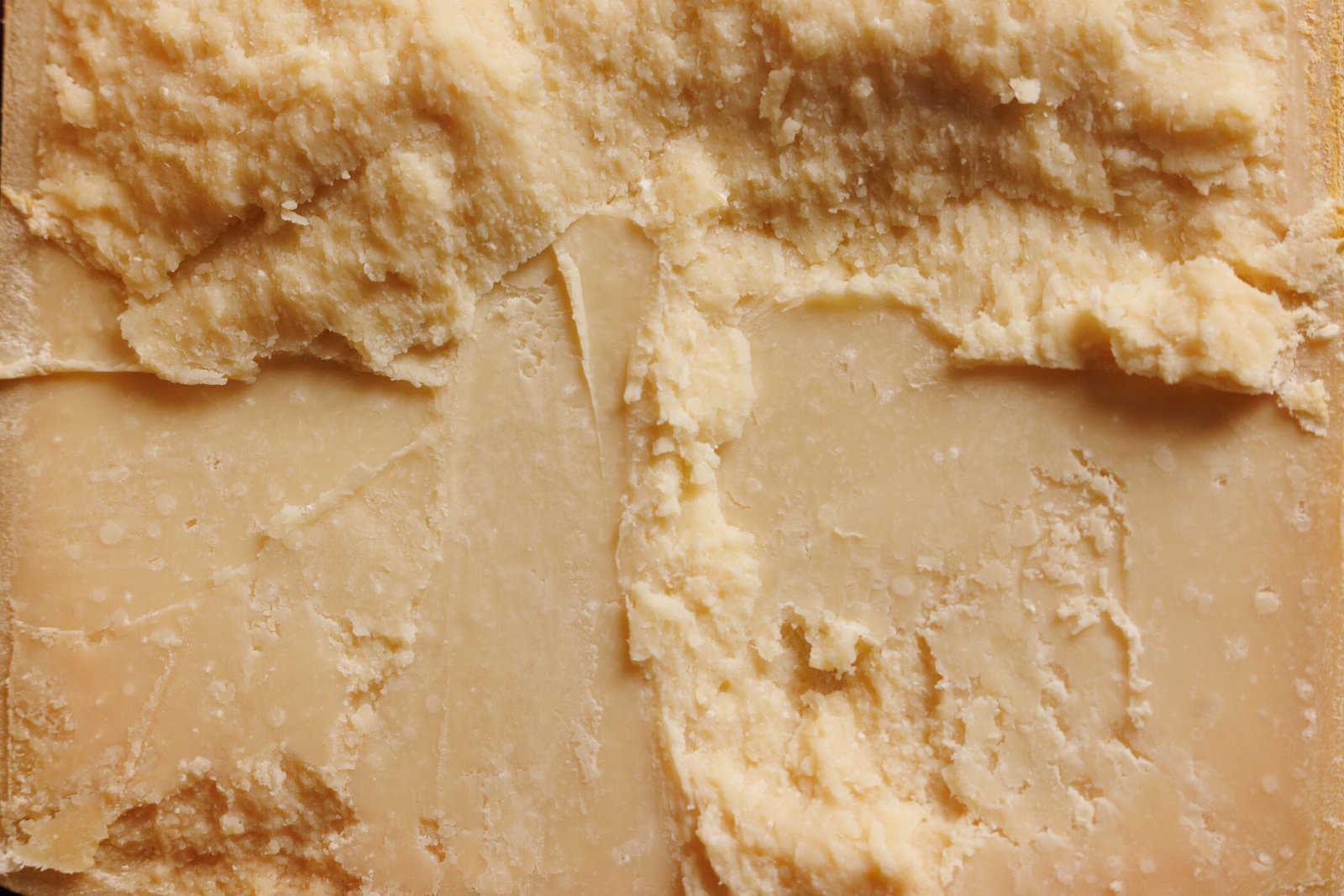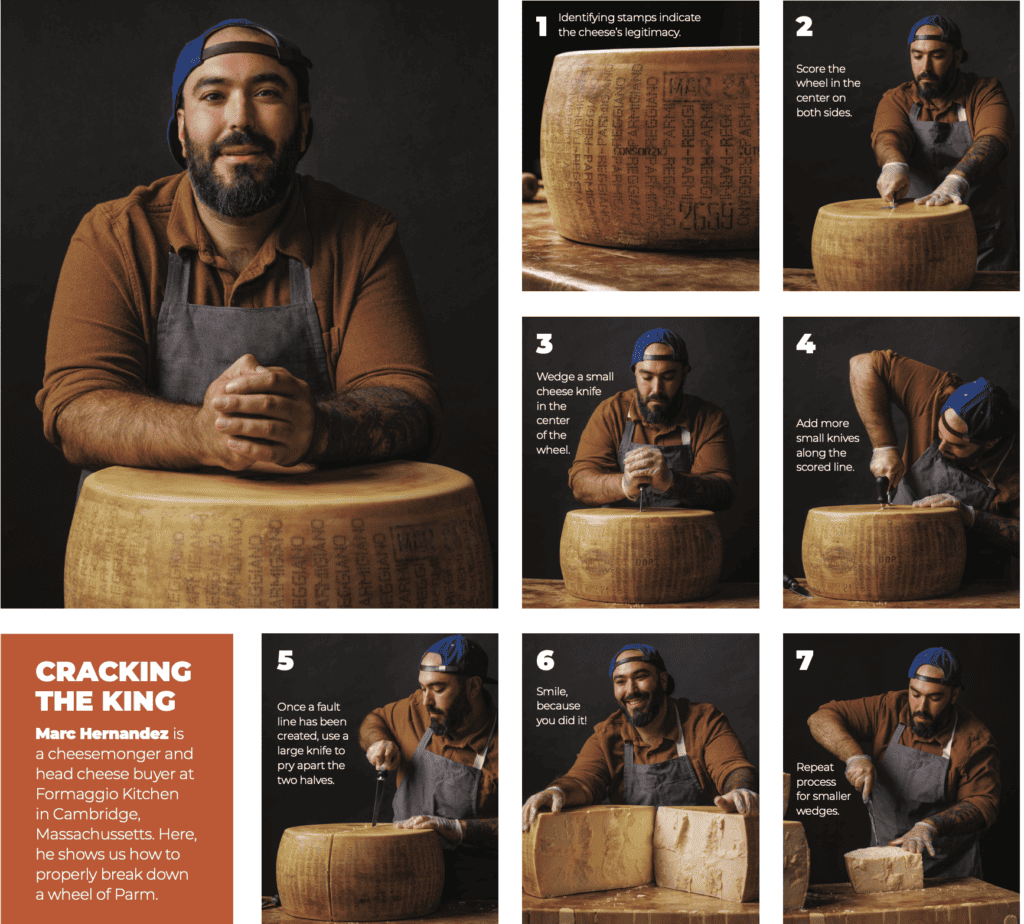
Photographed by Adam DeTour
Parmigiano Reggiano is often referred to as the “King of Cheeses,” and the sight (and scent) of thousands of imposing wheels aging gracefully on wooden shelves is indeed a majestic experience for the senses. If you’ve ever tasted a piece from a freshly cracked wheel and witnessed the skillful, almost reverent process of how it is properly opened, you’ll likely appreciate why it is one of Italy’s most iconic cheeses.
It’s also one of the country’s oldest: origins of Parmigiano Reggiano go back to the Middle Ages, when Benedictine and Cistercian monks in the Po Valley made a cow’s milk cheese that was suitable for long preservation. Italian author and poet Giovanni Boccaccio mentioned it in his most famous work, The Decameron, in the fourteenth century, describing a mythical happy valley called Bengodi, where there was “a mountain of grated Parmigiano cheese, on top of which there were people who did nothing but make maccheroni and ravioli and cook them in capon broth and then roll them down so that he who got the most had the most.”
During the Renaissance, production increased in the Parma and Reggio plains, as did the size of the wheels. In the seventeenth century, to distinguish Parmigiano from other products on the market, the Duke of Parma issued a deed that defined the places from which the cheese “of Parma” should come. The name Parmigiano Reggiano became official in 1954, and the production regulations specified under its Protected Designation of Origin status (PDO) are among the most stringent in Europe.

Today, around 300 producers make some four million wheels of Parmigiano Reggiano each year. Every step of the production and aging process must take place in a strictly defined geographical area of fertile countryside between the Po and Reno rivers that includes the provinces of Parma, Reggio Emilia, Modena, and parts of Bologna and Mantova.
Throughout the cheese’s history, the recipe has essentially remained unchanged, using raw cow’s milk, fermented whey, calf rennet, and salt. As the milk coagulates, the master cheesemakers assess the consistency to determine when it is ready to be cut, then break it down into tiny granules with a large whisk-like tool called a spino. After the rice-sized curds are cooked and settle together in the bottom of copper vats, they lift the roughly 200-pound mass from the whey with a wooden paddle, capture it in a large cloth and hoist it up for draining, then cut it into two parts, or gemelli (twins), that will become two wheels of Parmigiano Reggiano.
The curd masses are placed into molds, and a plastic band is inserted overnight to imprint the Parmigiano Reggiano name in pin-dot lettering on the rind, as well as the month and year of production. The wheels are removed and submerged in a brine for about 20 days. They are then aged for a minimum of 12 months, at which point each wheel is inspected by an expert to determine if it is worthy of the Parmigiano Reggiano name.
Those that pass are graded and fire-branded with the official Parmigiano Reggiano Consorzio seal, and some go on to mature for 18, 24, 36, and occasionally many more months. Keep in mind that during that aging process, every wheel must be tended to with periodic cleaning and flipping in a suitable environment for aging wheels of this size, which weigh an average of 88 pounds (they lose moisture—hence, weight—as they mature). This contributes to why older wheels generally cost more than younger ones.
At around 24 months of age, Parmigiano Reggiano is a harmonious balance of savory and sweet, with fruity notes of pineapple, and a moist yet grainy crystalline texture. The visible white spots in the paste, sometimes mistaken for salt grains, are actually crystals of an amino acid called tyrosine that impart a satisfying crunch. These are increasingly present as the cheese matures, and the consistency becomes grainier and crumblier. The flavor profile of more mature cheeses are more intense and savory, with meaty umami notes.
Among its many accolades, at the 2022 World Cheese Awards in Wales, Parmigiano Reggiano producers received a total of 93 medals, including two Super Golds. This is a cheese that has truly stood the test of time. The storied King of Cheeses continues to be a beloved ingredient and essential kitchen staple for Italians throughout the country, and highly coveted by cheese lovers around the globe.
How To Crack A Wheel of Parmigiano Reggiano

Breeds of Cows for Parmigano Reggiano
Italian Frisona
The Italian Frisona, or Holstein Friesan, is the most common breed among Parmigiano Reggiano producers because of their high milk yield. Imported from Holland, they were brought to Italy at the end of the nineteenth century and crossbred with cattle from Italian breeding farms in the twentieth century.
Red Cow (Vacca Rossa)
The Vacca Rossa is considered the “mother” of Parmigiano Reggiano. The milk of this ancient breed was used by the monks who first created the cheese now known as Parmigiano Reggiano.
Brown Cow (Vacca Bruna)
The Vacca Bruna is likely of Swiss origin and was brought to the Parma area around the eighteenth century. Their rich milk is balanced and high in nutritional benefits.
White Modenese (Bianca Modenese)
The Bianca Modenese breed was nearly extinct in the late twentieth century, and today there are just two dairies that produce Parmigiano Reggiano using their milk, which is ideal for cheesemaking. This hardy breed is part of the Slow Food Presidium, a program that protects traditional methods of artisanal food production.




